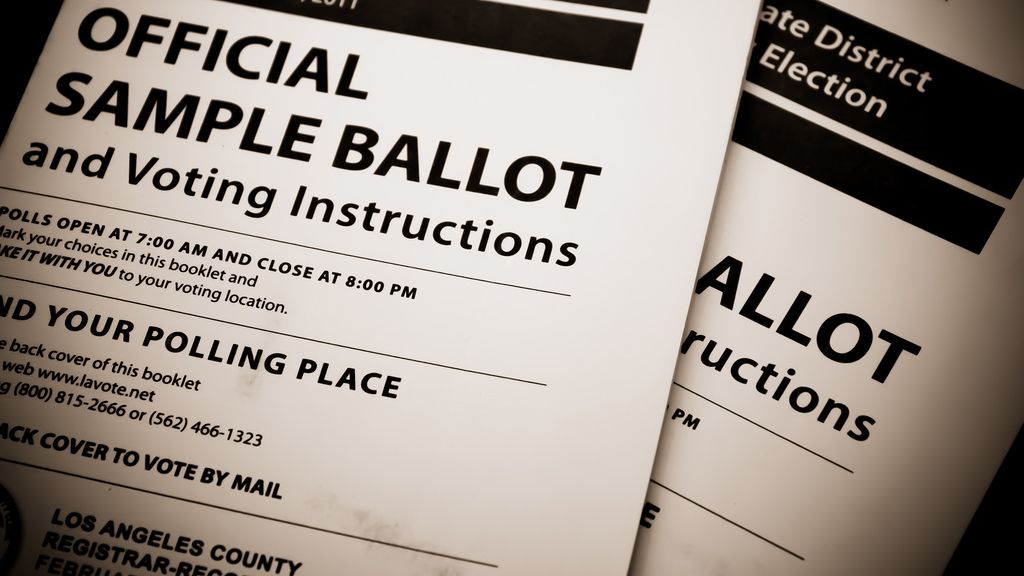
This article is reprinted from The American Prospect. You can find the original publication here.
First Ballot
According to the latest numbers from Michael McDonald, a professor at the University of Florida who has been tracking early voting turnout, 78.8 million* Americans have voted in the 2020 election already. Over 51 million of those have been mail-in ballots, and another 27.5 million-plus in-person at early voting sites. Less than half of those votes can be sorted by voter registration data (some states don’t keep track, and others don’t have partisan voter registration), but for those that do, the breakdown of those who have voted is: 47 percent Democratic, 29.6 percent Republican, and 23 percent no party affiliation or third parties.
This already blows away the 47 million who voted early in 2016, with a week and a day to go. And that tells you approximately nothing about the outcome of the presidential election or any other race on the ballot.
We already knew this would be a record year for early turnout. There’s a pandemic on; nobody wants to be in crowded lines on Election Day. Many states loosened their mail-in balloting requirements and some sent ballots to every registered voter. The threat of delays in the US Postal Service has people turning in those mail-in ballots very early, either through the mail or in secure dropboxes in the states. This was all known information prior to balloting beginning.
What we don’t know is whether this is pulling forward reliable voters who would have shown up on Election Day anyway, or whether the relatively easier access is bringing out new people to vote. You just can’t get to that level of granularity beyond anecdote. A Democratic advantage in the early vote can be offset by a Republican advantage in the Election Day vote. (In some states, like Florida, there’s been a Democratic early early vote and a Republican later early vote. Republicans gained on the in-person early vote period after Democrats had the advantage in mail-in ballots.)
There are definitely some impressions you can gather from early turnout. One of the most potentially exciting is early turnout among young people. There we see youth turnout blowing away the 2016 numbers. At least some of those voters were not eligible in 2016, so that genuinely represents additions to the vote. And all polling shows that young people are voting overwhelmingly Democratic. Yet while these numbers are big, if the Election Day youth turnout numbers are significantly down, you could see this offset.
The early vote numbers in particular areas may sound encouraging. We saw 93,000 turn out on the first day in New York City; at least half of all mail-in ballots requested have been cast in Pennsylvania; some suburban counties in Texas are tracking already at nearly half of all registered voters turning out. That’s great for now, but again, not yet clear what it will mean in the final analysis.
There are 1 million new registered voters in Georgia, out of 7.6 million voters registered overall. So around 13 percent of the electorate is brand new. Nearly two-thirds of those new voters are people of color. Also excellent, but we don’t know and won’t know, precisely, how many of those new voters turned out and who they turned out for.
What we can say about early turnout is that banking votes makes it easier for parties to focus on getting the rest of them out to the polls. You would definitely rather have votes in the can than trying to get people in late. Election Day turnout often hinges, rather sadly, on the weather. So having votes in hand is a hedge against rain or snow, and a better position to be in for get-out-the-vote operations. But to really make a prediction about the outcome of the election, you can’t just extrapolate from the early vote, which could reflect a burst of energy for Joe Biden or just the known reality from polling that Democrats are more skittish about the coronavirus than Republicans, and therefore more likely to seek out safer voting options.
For predictions you have to go back to the polls. And though Democratic voters want to look far, far away from that, ever-mindful of the 2016 outcome, the polls do show a larger and more stable lead for Biden this time than for Hillary Clinton in 2016, with district-level data consistent with the state picture (that wasn’t the case four years ago). The trendline expectation has gone up for Biden consistently for two months. “I’ve seen… almost enough,” said noted enough-seer David Wasserman on Sunday.
You may not trust it, but that’s a reasonable claim. Being satisfied because of early turnout statistics is not.
Quote of the Day
“We’re not going to control the pandemic,” said White House chief of staff Mark Meadows on Sunday, which is why he’s unlikely to be chief of staff come January. It’s almost like Meadows focused-groups what would be the worst possible message a week before the election ends. Trump saying in the debate that we would “have to learn to live with” the virus approaches this level of political malpractice, but somehow this presents as worse. The Biden campaign pounced, and rightly so.
Pandemic Watch
• We keep setting record highs for case counts, I’m assuming we’ll go over 100,000/day within weeks. • No economic relief in sight. • Just as bad on the case levels in Europe, which actually does signify the relative nature of countries “doing a good job.” Of course, Europe’s on its second wave and the U.S. is on its third. • The Trump administration wanted to give early vaccine access to mall Santas as part of an ad campaign. Really! • Capitalism after the pandemic. • Here’s a relief spending tracker from the Project on Government Oversight.
Days Until the Election
6.
Today I Learned, Election Edition
- Mike Pence’s top aides have COVID and he’s still campaigning. He’s even still going to preside over the Senate session to confirm Amy Coney Barrett tonight. (HuffPost)
- The October surprise that was listed on the calendar was the 3rd quarter GDP release on October 29. It’s going to show 30 percent-plus growth, but that’s off the historic drop in the previous quarter. (Vox)
- The Trump executive order that could cripple an incoming Biden administration. (The Independent)
- Nancy Pelosi will seek re-election as House Speaker. (Washington Post)
- The most expensive ballot measure in history, Prop 22 in California—which would create a special labor law for Uber and Lyft—has the polling trajectory of a ballot measure that loses. (Los Angeles Times)
- Laid-off workers now making beating Trump their full-time job. (HuffPost)
- Lou Dobbs hates Lindsey Graham, is actively campaigning to oust him. (The Wrap)
* Early voting numbers above are from October 29 at 11 AM ET.




